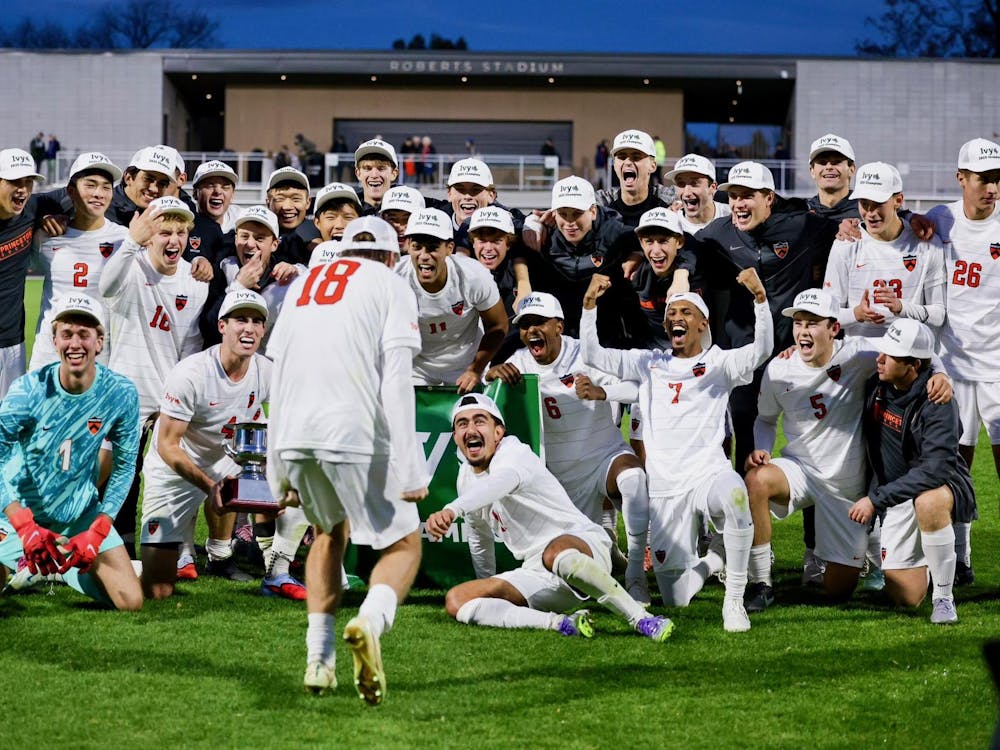Set up a triangle. Or maybe draw out an umbrella. Feeling particularly creative? A reverse combination of the two might draw a defender into the corner and then leave the low slot wide open. Sound like a lot of jargon? To the average person it is, but to the women's ice hockey team, it is little more than basic practice instructions for a power-play situation.
When the Tigers (4-3-2 overall, 2-1-1 Eastern College Athletic Conference Hockey League) have a power-play opportunity — in other words, when the other team has taken a penalty and Princeton is playing with five women on the ice against its opponent's four — the trick is to keep possession of the puck. The team on the power play has the ability to control not only the pace of the puck movement but also the style of movement around the offensive zone.
The initial strategy for a power play is dependent upon two basic factors: the specific strengths of the defending goalie and the cohesion of the offensive unit. On the power play, where offensive action is the objective, stacking the ice with four forwards and only one defenseman is a common strategy, though it is often just as effective to keep out a three-forward line and a matching defensive pair. Essentially, the goals of a power play come down to forming a basic ratio.
"No matter what power play we run, we try break down the five-versus-four into a two-versus-one," head coach Jeff Kampersal '92 said. "There is always a two-versus-one somewhere; we look to exploit that."
This season, the Tigers have had difficulty converting their power play opportunities into goals, though not for lack of trying. Princeton has had 83 shots during 100-plus minutes of one-man advantage, yet it has only scored 10 goals during those power-play minutes. Still, Kampersal isn't worried about the team's averages.
"The power play can be temperamental," he said. "Sometimes, you practice it forever and have nothing to show for it; other times, you do not practice it at all, and everything clicks. Our players work hard at it, though; that is all we can ask for."
The Tigers have the right idea. Shots on net are exactly the point of the power play, and, while it may seem to be a relatively obvious strategy, finding space for a good shot is a lot trickier than it looks. Every player on the ice has to be focused and effective, and every player has a very specialized task to perform.
"You need players who will dig a puck out of the corner and win battles," Kampersal said. "That player is also the player who usually takes a beating in front of the net from defenders and high point shots. You need players who can catch-and-shoot efficiently ... players [who] are usually good at getting to rebounds and scoring goals on second chances and tips."
Oneor two-man advantages shift the game's intensity quickly: the offense gears up for goals, but the defense also goes into hyper-drive, sacrificing their bodies and watching the offense like hawks for any weakness that would present an opportunity to steal the puck and ice it out of the zone.
Determined control, even in a high-energy time like a power play, remains the most important factor for a successful special-team unit. This control is left to one key player, a "player with vision, a quarterback, someone who can make a play and settle things down under duress," according to Kampersal, who determines exactly how the team is going to attack.
"The key to having a good power play is to break out efficiently and try and score off the rush, or keep protection of the puck and set your scheme up in the offensive zone," Kampersal said. "[Only] after, do we look for puck movement or player and puck movement."
This season, Kampersal has had a variety of scorers on his team's power plays. Sophomore forward Marykate Oakley and junior forward Laura Watt lead the team with two power-play goals each, but the Tigers have also seen power-play goals from six other players. With both forwards and defensemen scoring, Princeton shows a solid distribution of scoring potential around Kampersal's special-teams unit.

This abundance of scoring threats puts the Tigers in an excellent position for maximizing shots, as Princeton has already done this season. Now, all the team has to do is to make those shots count on the scoreboard.







